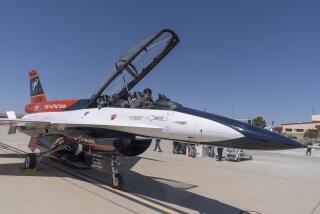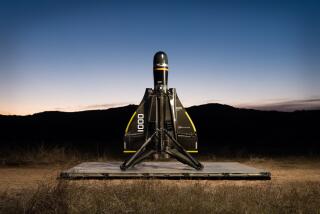Smart Missile Needs Smart Operator--That’s the Sting
- Share via
The debate within the Reagan Administration over whether to furnish Stinger anti-aircraft missiles to guerrilla fighters in Angola and Afghanistan--and concerns that they could then fall into the hands of terrorists--has thrust the weapon into the international limelight.
But the Stinger is hardly new to controversy.
Now deployed with all four U.S. military services, the heat-seeking missile has been highly touted as a top-of-the-line “smart” weapon against low-altitude enemy aircraft. Yet there is good reason to be skeptical about its capabilities in the field, especially in the hands of Third World forces. Indeed, the Stinger is a good example of a “user-unfriendly” system whose effectiveness has been lessened because the human factor was neglected during the design process. This “smart” weapon, it turns out, requires an equally smart operator.
Under initial design specifications, the Stinger gunner was supposed to hit his quarry roughly two of every three times that he fired the 5-foot-long supersonic missile. This estimate neglected to account for the extraordinary demands imposed on the gunner, who must prepare the weapon, identify the aircraft as hostile, track and range the target and complete the lock-on and firing sequence.
Among the most difficult steps are those requiring the gunner to shift from one sight picture to another as he continues to track the target, at the same time determining target type (fixed-wing or helicopter) and its location relative to his position (coming from the left, inbound or outbound, coming from the right)--all this in the heat of combat. To complicate matters further, the 18 steps needed to engage the weapon are not necessarily performed serially--the gunner cannot anticipate that the sequence will proceed in order from the first to the last step.
This rather involved engagement sequence puts a premium on both reasoning skills and hand-eye coordination in a combination possessed mostly by soldiers in the upper ranges of ability. Thus, during field tests in the early 1980s the Army found that U.S. operators whose general military aptitudes fell in the bottom half of the youth population rarely hit their target. It then estimated that the typical soldier assigned to Stinger duty would have hit fewer than half the targets, an effectiveness level about 30% below design specifications.
Ignoring human engineering considerations also contributed to other design problems. When fired, the Stinger emits an acid plume with a hydrogen chloride concentration 20 times larger than Occupational Safety and Health Administration standards. To avoid toxic effects, the gunner is told to hold his breath until the cloud dissipates. Also, because of flying debris associated with the weapon’s back-blast, firing is restricted to launcher elevations for which the breech is at least 30 inches above the ground; thus, only 2% of all Army soldiers are tall enough to safely use the weapon throughout the full range of its designed capabilities.
The Stinger is not an isolated case. The nation’s armed forces are failing to achieve the full performance designed into many weapons because of an underlying trend toward more complicated, less reliable and more difficult-to-maintain equipment.
A variety of things can be done to better tailor weapons to the capabilities of the people assigned to use them, while up-to-date training methods and advanced training technologies could better fit the man to the machine. Such improvements, though, face several hurdles deeply rooted in the military’s weapons-acquisition process. A preoccupation with achieving maximum performance systems and fielding them as early as possible, along with a penchant for containing costs, leaves little leeway to consider human factors.
If manpower considerations had been given equal billing with performance, schedule and cost early in the Stinger’s development cycle, appropriate design trade-offs could have been made. System effectiveness would have been higher, the nation would have realized a fuller return on its investment in the weapon, and Angolan guerrilla leader Jonas Savimbi would not have to scour his ranks for tall, smart rebels able to hold their breath for long periods.
More to Read
Sign up for Essential California
The most important California stories and recommendations in your inbox every morning.
You may occasionally receive promotional content from the Los Angeles Times.











